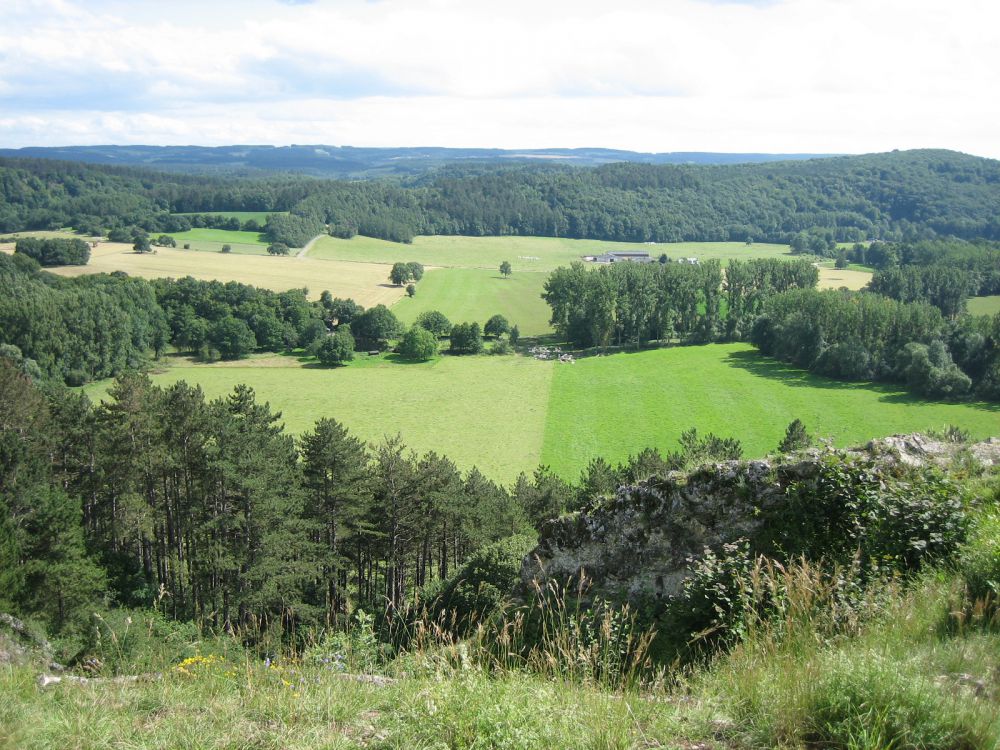




Das Belvedere - Han-sur-Lesse
The view from the Belvédère is one of the most superb in the area, with its typical Famenne countryside and, in the distance the Ardennes looming on the horizon.
This area is protected because of its exceptional beauty but also because of the incredible variety of its fauna and flora. At your feet, you can admire the exceptional 'dry river valley' or as the Walloons say 'chavée' , or more simply put, the Lesse's former river bed. You can also see the dome-shaped, tree clad Boine massif, where the industrious river dug out the caves of Han.
Until about 100,000 years ago, the Lesse used to flow in this large meander, before finding an easier underground route, thus creating the Belvaux swallow hole, where the river disappears into the massif's limestone subsoil through a vertiginous 50 metres (55 yards) deep siphon. This is what is called a 'lost river'. The Lesse then reappears 2 km (1.2 miles) further at the caves' exit. The absorption capacity of the chasm is limited to 25,000 litres per second, so as soon as the river flow achieves a higher rate, the Lesse flows back into its former river bed (meander), flowing around the Boine massif once more and flooding the neighbouring areas.
The villagers in Han then say that the water 'turns'.
